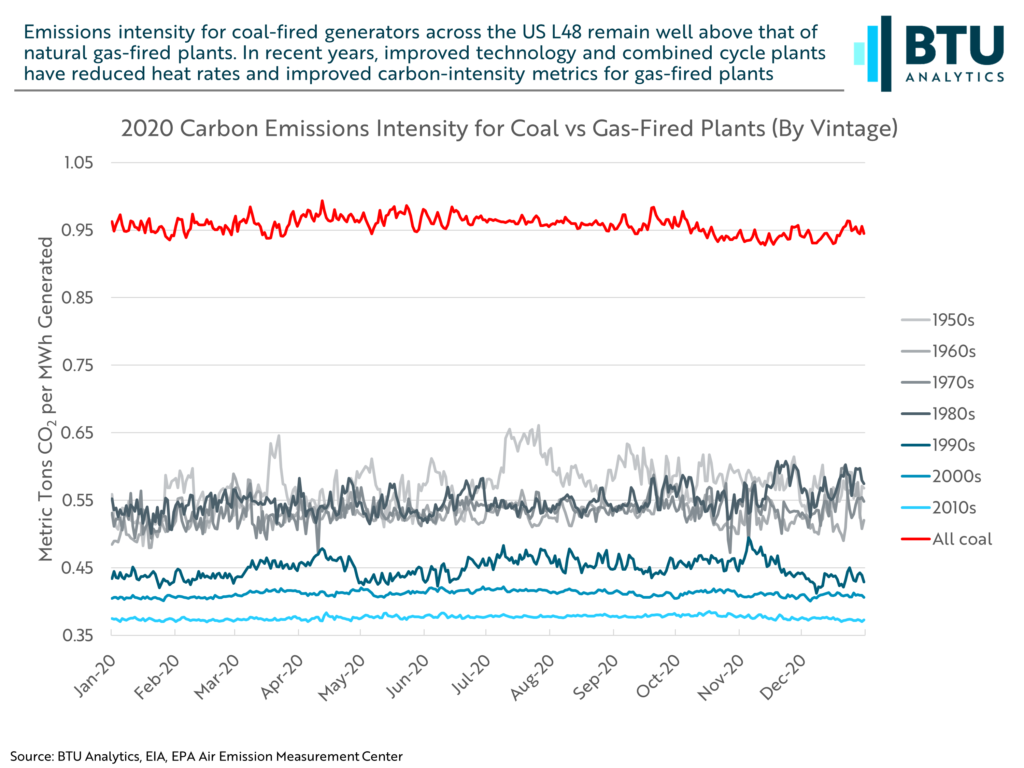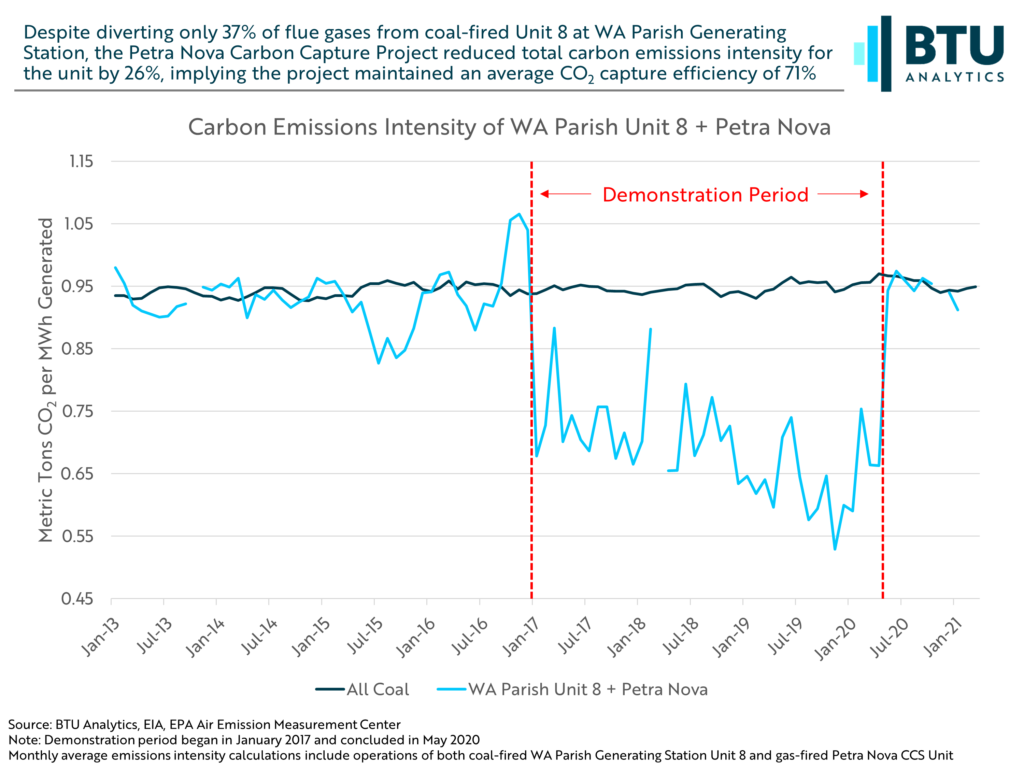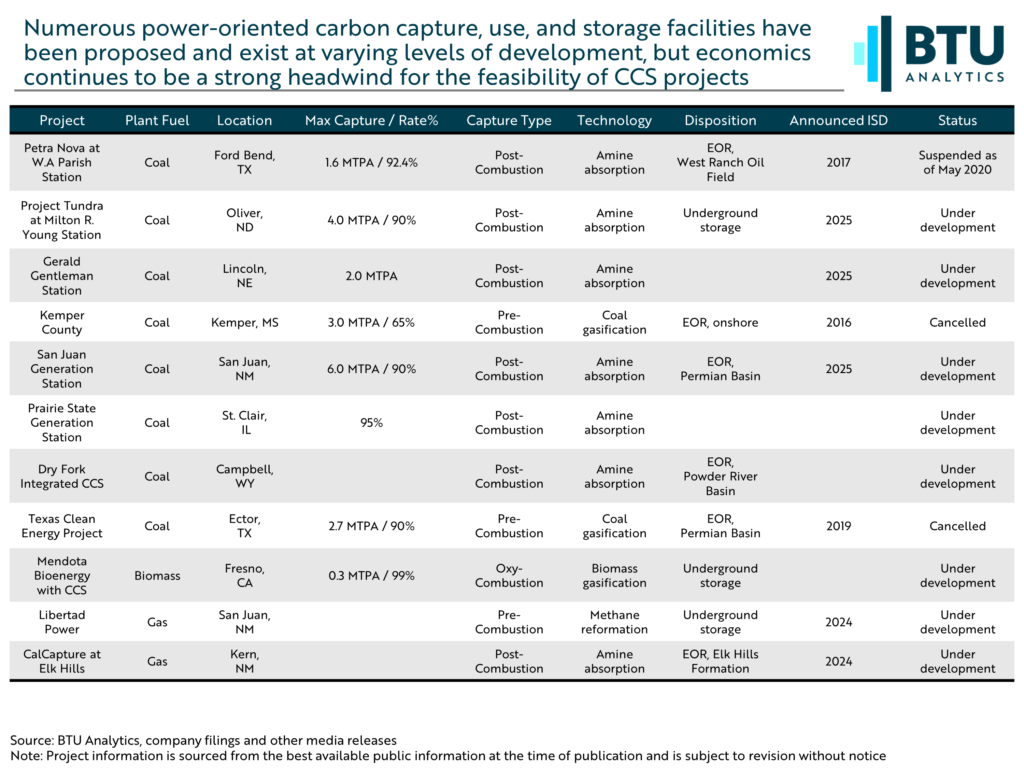Approximately 107 GW of coal-fired capacity has been retired over the last ten years and an additional 72 GW is expected to retire over the next decade. While economics is the primary force driving these plants to retirement, recent attention on greenhouse gas emissions for power generation has brought additional scrutiny to their carbon footprints. Back in April, BTU Analytics examined coal-fired power plant emissions for the largest operational coal plants across the US Lower 48 States. Today’s Energy Market Insight will explore utility-scale carbon capture and sequestration (CCS) at power plants.

The chart above shows 2020 average daily carbon emissions intensity for coal (red line) and gas-fired generation by vintage across the US Lower 48. While coal plants generally produce a higher level of emissions per MWh, advances in technology for natural gas-fired units have proliferated in recent years. New combined cycle plants and more efficient turbine designs reduced heat rates and emissions intensity for newer gas plants.
To demonstrate the feasibility of utility-scale CCS technology at an operational coal plant, the US Department of Energy, in partnership with NRG Energy, developed a carbon capture and sequestration project at the WA Parish Generating Station near Houston. The Petra Nova CCS project was designed to remove CO2 from a portion of the exhaust gases from the plant’s coal-fired Unit No. 8. As a result, total emissions intensity fell from 0.93 metric tons of CO2 per MWh to 0.68 tons/MWh after the project entered commercial service in January 2017.

After extraction from the exhaust stream, the gaseous CO2 was compressed and piped for use in enhanced oil recovery. Operations at Petra Nova were halted in May 2020 when the COVID-19-related collapse in crude prices made ongoing EOR operations uneconomic.
Regulatory incentives for project development continue to evolve and several power-related CCS projects have been proposed and are at various stages of development as shown in the table below. Capital costs for such projects continue to remain significant but opportunities for enhanced oil extraction and expanded tax incentives are driving increased interest. Despite the challenges Petra Nova faced near the end of its demonstration period, the project, currently the largest of its kind in the world, provides evidence that utility-scale carbon capture retrofits of existing power plants are technically feasible.

While the CCS industry remains nascent, a growing focus on climate may provide support for further development. The Bipartisan Budget Act of 2018 expanded and extended the IRC §45Q tax credit for geological sequestration of carbon oxides and in January 2021 the IRS issued final regulations for claiming these credits. President Biden’s Climate Plan promises to accelerate the development and deployment of CCS projects by increasing federal investment and enhancing tax incentives.
For a closer look at the emissions intensity of existing power plants, BTU Analytics’ Power View provides a comprehensive emissions dataset capable of visualizing CO2, NOX, and SO2 emissions from US thermal generation plants. To see these emissions data and more, contact us to set up a demo today.








